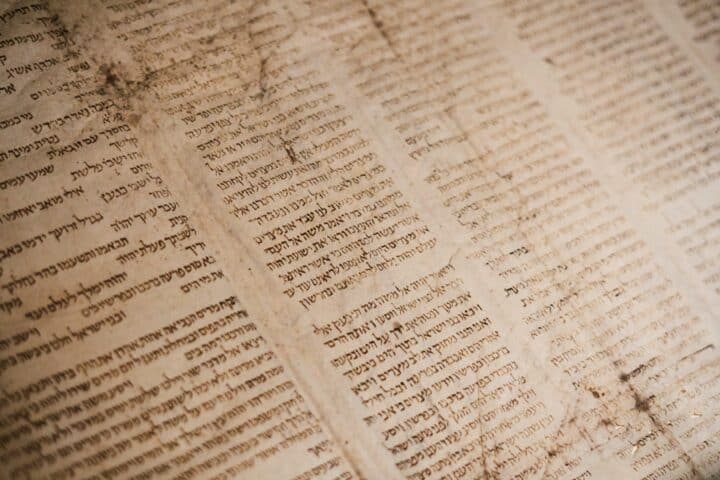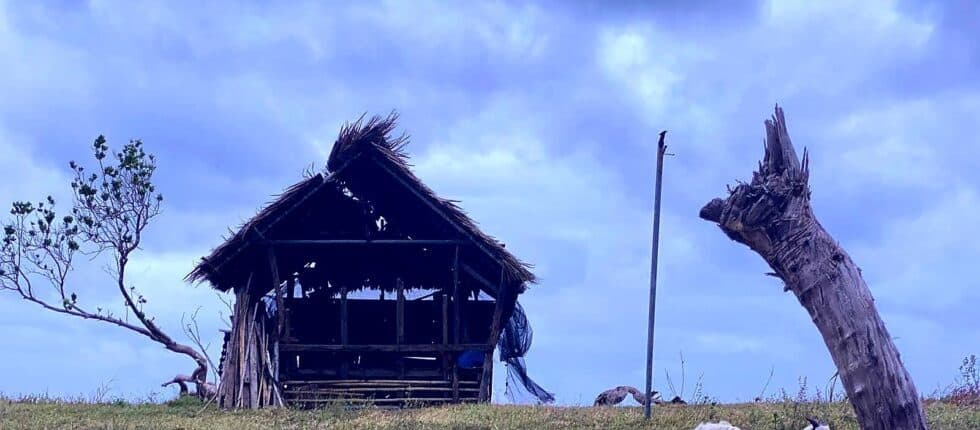About the establishment of the Van Leer Jerusalem Institute
Daniela Charbit | 12.05.2021 | Photo: David Rubinger, Yedioth Ahronoth
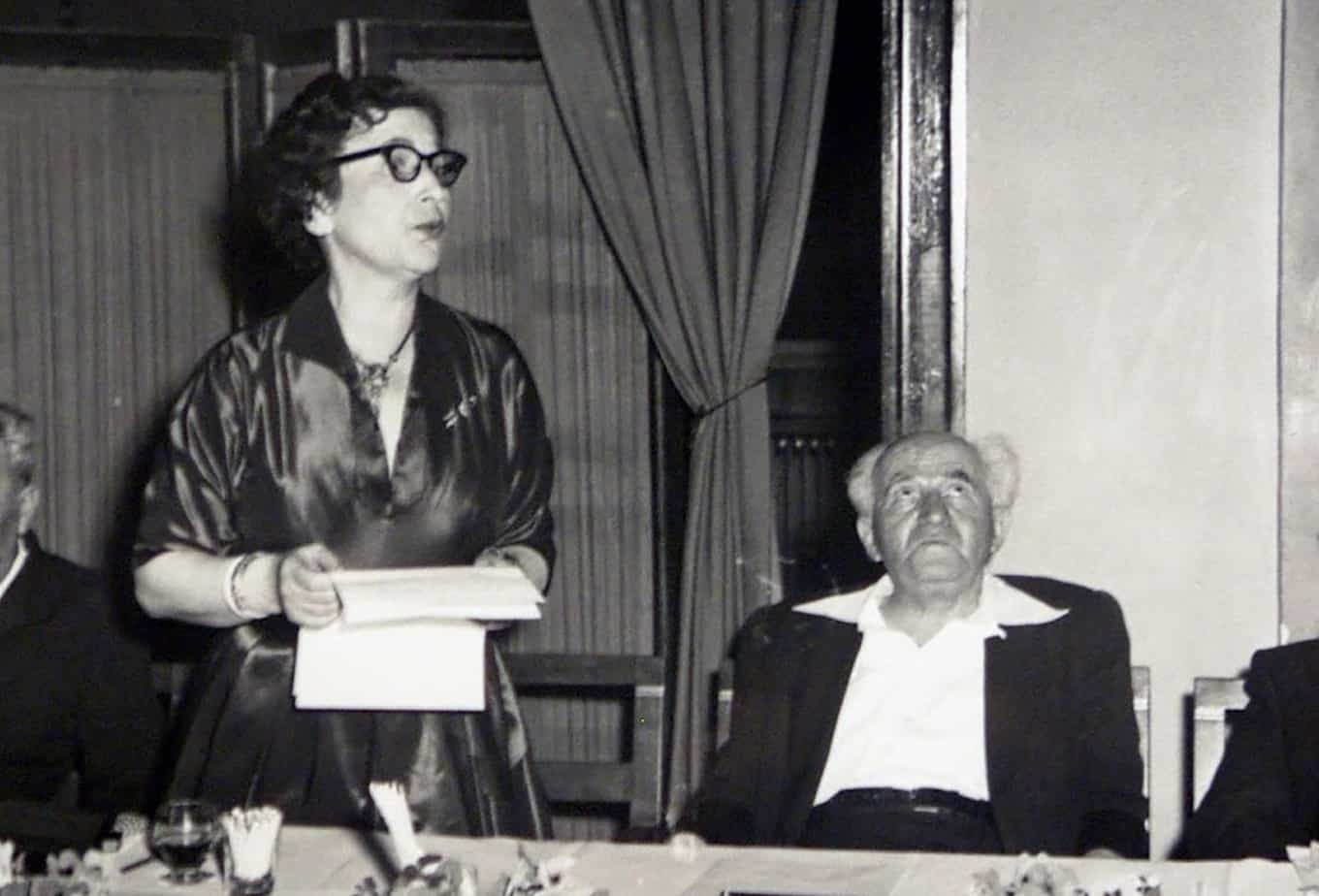
“Mr. Ben-Gurion, you must come see my building,” said Polly Van Leer about the new Institute she built in the Talbiyah neighborhood of Jerusalem. Ben-Gurion replied: “Polly, leave me alone. You know I don't care about buildings.” After he succumbed and came to see what all the fuss was about, Polly said to him: “This is my baby.” And he shook his head and said: “We must develop the Negev...” (“Kol Ha’Ir” newspaper, March 27, 1981)
“For out of Zion shall go forth Torah”
“Ms. van Leer fell in love with Jerusalem at first sight,” the “Ma’ariv” newspaper wrote on December 16, 1955. At the end of the 1940s, Ms. Van Leer came to Jerusalem with the vision of “For out of Zion shall go forth Torah,” and the budget to make it come true. After founding the newspaper “Chronicles – News of the Past,” Ms. Van Leer turned to her main goal: turning Israel into a world center of humanistic values and science.
The conversation between Polly Van Leer and David Ben-Gurion in the late 1950s about her new “baby” was the product of serious negotiations they had held a few years earlier: the van Leer family would fund and build the Academy of Sciences in Jerusalem, in exchange for 30 dunums (3 hectares) of land for building an adjacent center for the advancement of human culture. And so it was: In December 1955 Ms. van Leer submitted a plan to the government for building the center for the promotion of human culture. But the van Leer family also demanded passing a special law in the Knesset to give it “legislative, public and official authorization, allowing the Institute to be built as a completely private institution,” according to then-Minister of Justice Pinhas Rosen. In December 1958 the law was passed by the Knesset and Polly Van Leer attended to the construction of the building that would carry her “quasi-philosophical, quasi-mystical message of the need for ‘unity of man, the universe and religions’” (“Kol Ha’Ir”, March 27, 1981).
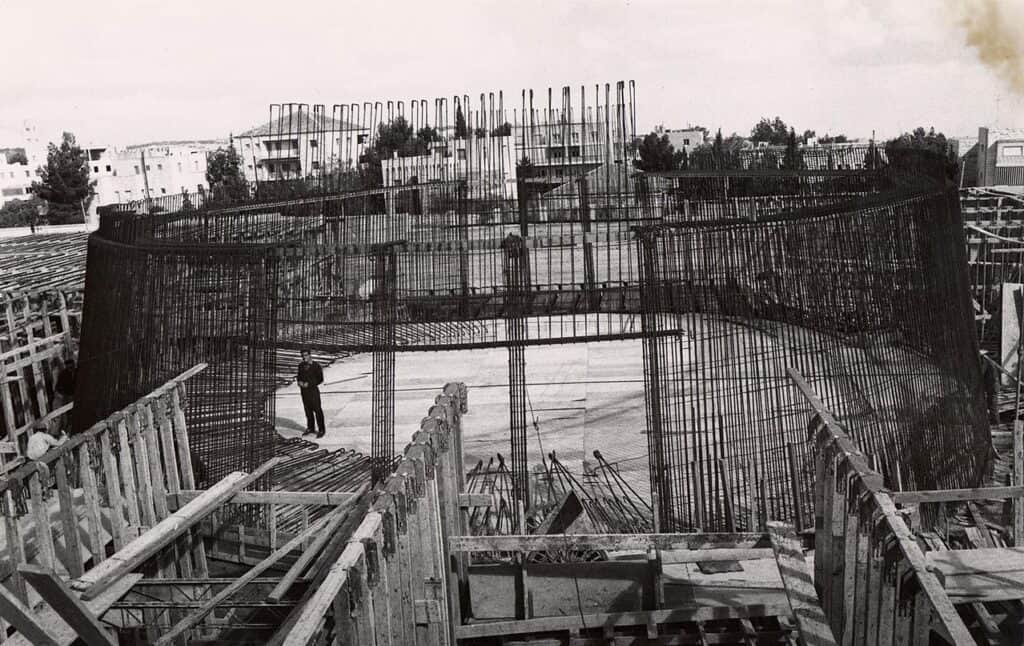
“The temple of the spirit of Israel” – why Jerusalem?
The Institute's architects, David Resnick and Shimon Povzner, drew up the plan consisting of two buildings, together creating the letter L. The higher building, the Van Leer Jerusalem Institute, symbolizes wisdom; the lower building, the Israel Academy of Sciences and Humanities, symbolizes science. The two buildings are connected by a staircase.
Polly Van Leer believed that the Jewish people, the new State of Israel, and the entire world, were suffering from a spiritual malaise, whose solution was a new way of life: “A new synthesis between traditional Jewish wisdom as understood from the biblical text, and scientific knowledge” (from “Meeting Visions,” Shaul Katz, 2009). Thus, she believed, building the “Temple of the Spirit of Israel” (the Van Leer Jerusalem Institute), alongside the Israel Academy of Sciences and Humanities – in Jerusalem – would create that synthesis.
Polly Van Leer’s vision came true, and since her “baby” was erected, the Institute has held extensive and diverse research activities, with an emphasis on promoting human spirit and values.
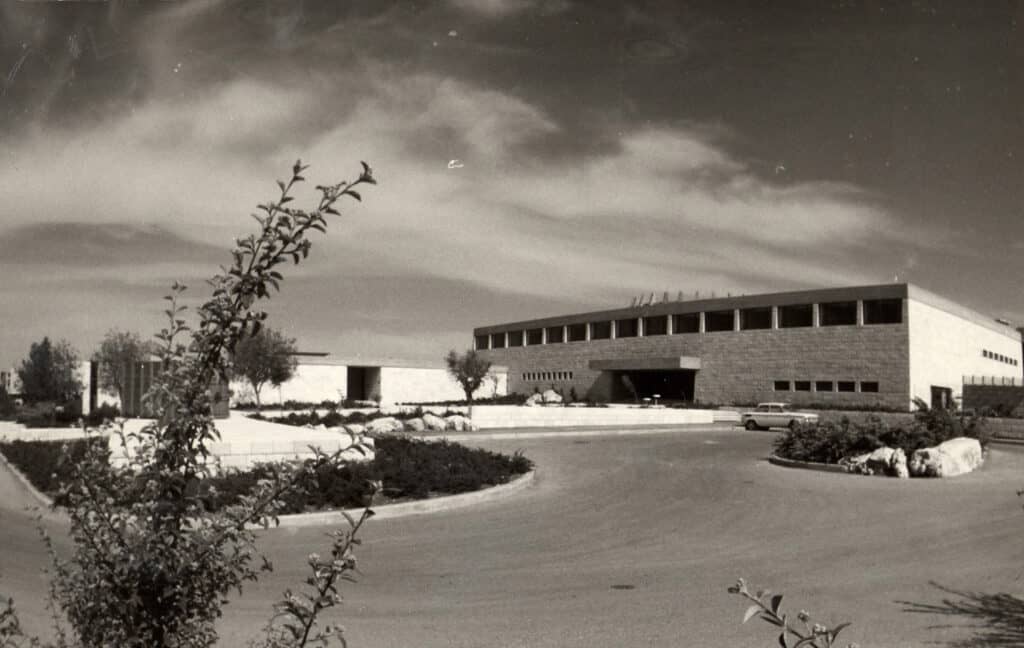
For further reading:
- Talbiyah’s community center, Kol Ha’Ir, March 27, 1981
- Meeting Visions, Shaul Katz, 2009
- The National Library, Ma’ariv, 16 December 1955
Photo: David Ben-Gurion and Polly Van Leer, 1956.

